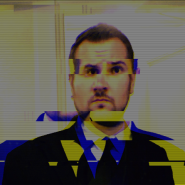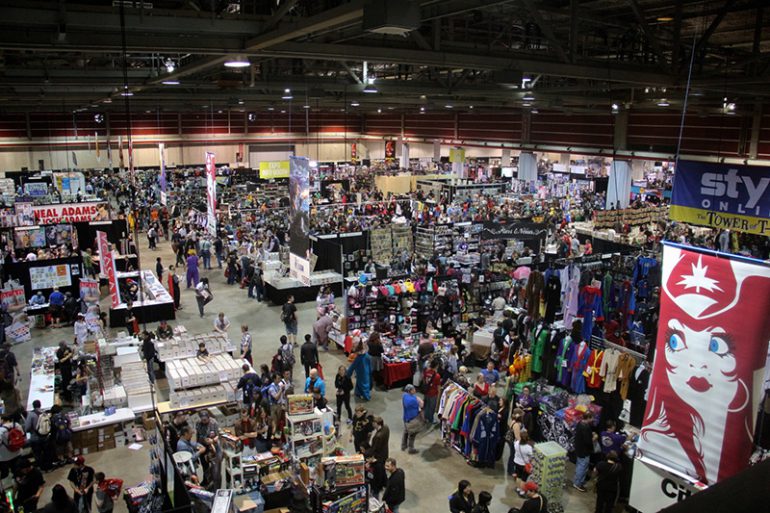 TAG Profiles is a blog series that explores the work of current TAG scholars. Dr. Kalervo Sinervo is an outgoing PhD student in Concordia’s Interdisciplinary Humanities program and will be starting a FRQSC post-doc in the University of Calgary’s English department this fall.
TAG Profiles is a blog series that explores the work of current TAG scholars. Dr. Kalervo Sinervo is an outgoing PhD student in Concordia’s Interdisciplinary Humanities program and will be starting a FRQSC post-doc in the University of Calgary’s English department this fall.
You recently completed your PhD here at Concordia. What was it about?
My PhD revolved around three specific topics that overlap, sort of like a Venn diagram. One of them is pop culture iconicity, which is essentially the idea of characters that everybody knows if they speak the same language. The second is the concept of transmedia, which is an overarching theory that discusses how we franchise pop culture icons. And then finally, videogame space — specifically, videogame urban space. So I suppose the elevator pitch for my dissertation is: “how do the protocols and processes of transmedia impact the development of game spaces and develop us as fans and consumers?” To analyze this question, I used Gotham City as a subject and I talked about Batman a lot.
What made you decide to pick on Gotham City?
It really came out of like a paper that I wrote for Will Straw at McGill, after Arkham Origins came out, when I noticed that the game overlapped with Arkham City in really interesting ways. Also, I chose Gotham City because I already knew it and Batman really well, because I am a nerd. For my undergrad and master’s theses, I didn’t really choose objects to look at that I was super passionate about, and so for my PhD I decided: “If I’m going to spend three years with this thing, I better like it a little bit!”

And what kind of methods did you use to explore Gotham?
It’s a lot of really close playing and experimental playing. This was both the fun and horrendously tedious part of it — the ideas from a lot of my observations just came out of playing between the games. I would spend an hour playing one game and then switch over to another game and visit a similar area in the environment, to see how the code matched up on the surface level. So there’s, like, four different Arkham games and three different Lego Batman games that I was looking at. For each of them, I was really interested in the development process and how the code moves from game to game to game. By looking at them in tandem, without cracking the games open or hacking them, I was really able to clarify these algorithmic processes that have been dressed up in different ways, but which use/reuse the same code. So I was really interested in this process of churn and reuse and transmedia.
You’re going to Calgary in the fall to begin an FRQSC funded post-doc. What is the focus of the project?
I’m going to be researching comic conventions, and I’m looking at the ways that the convention floor space is mapped out — how that flows attendees into certain areas and who is located in the areas that they’re being flowed to. I’ll be thinking about retailers, both corporate and independent, and the various different stakeholders at these conventions. What’s cool about the project is I’m joining up with a much larger SSHRC PDG project that is led by Ben Woo at Carleton University. That research project is looking at multiple Comic Cons – it’s looking at the Calgary Expo informally, and it has formally partnered with both the Ottawa Geek Market and the Toronto Comic Arts Festival. The fact that they’re partnering with these festivals means that I may actually get the chance to talk to organizers about how they make decisions about where they place people within the convention space. My dissertation was about virtual space and this is about real space, set up in a temporary construct, but it’s all about what those spaces tell you about the ideology of the people who build and organize those spaces.

It’s interesting to consider how conventions have grown over the past 20-30 years, from niche events to huge media affairs.
I used to go to Comic Cons when I was a kid, because again, I am a nerd. There were people signing autographs and stuff, but in a lot of cases it was pretty much just hardcore geekdom and almost flea market retail. It was a big retail space where you go and sift through back issues and buy toys and stuff like that. And now the San Diego Comic Con is like, the biggest event of the year for movie studios, especially for announcing what they’re doing next. The Calgary Expo is the second biggest event on the Calgary Municipal events calendar right after the Stampede, and brings in tens of millions of dollars. These conventions are now super essential to generating publicity and keeping that transmedial churn of publicity going. It’s this huge site of fandom where fans get to interact with creators and with producers.
How does TAG help you realize the goals of your project?
TAG has been instrumental in realizing the goals of my dissertation project, from getting access to equipment — being able to play Arkham VR three times over, no matter how many headaches I experienced — to having a community where I can bounce ideas off of people. I really hope it shows in my citations and my dissertation just how much I admire the other students at TAG and how much their research has meant to my own ability to do research. There’s so many other things I could talk about too… the fact that I have a social community — I did two English degrees before my PhD and they were both a bit solipsistic and lonely — and I did not feel alone this time around. Even while I was just working on my own research, I had people who would sit with me and we would work in tandem with each other.
Where can people follow you online?
You can check out my website at www.badpanels.com or on Twitter @kalervideo.
